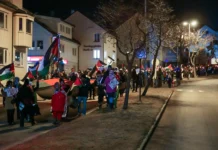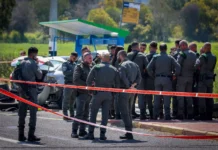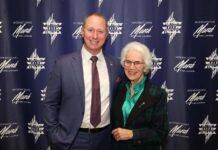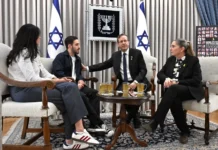SAN DIEGO – What started as a family research project has developed into an intriguing way to tell the stories of Holocaust survivors that may ignite the interest of younger generations.
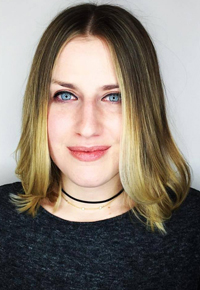
Sarah Kamaras, an independent film maker based in New York, has taken the usual components of survivor testimony and stock newsreel footage, and added animation to them, enabling young viewers to visualize the events narrated by the survivors.
To introduce the concept, which she hopes will be accepted by Holocaust museums and educational institutions, Kamaras has put up on the website http://thepodkamieners.com five short documentaries relating the stories of survival of Jewish residents of the small town of Podkamien, which today is part of the Ukraine. The shorts range in length from six to twelve minutes long, and all can easily be seen within an hour’s time.
Originally, she sought out the interviewees to learn more about her late grandparents, who also were Holocaust survivors but who died before Kamaras ever had a chance to interview them. However, after interviewing her grandparents’ contemporaries from Podkamien, she decided that their own stories were so interesting that they deserved to be told on their own merits. Some of the documentaries are in Hebrew with English subtitles; others utilize English language, depending on whether the Podkamien survivors settled in Israel or in the United States.
One of the shorts is about the Sarid family. The name “Sarid” means “survivor” in Hebrew; the family changed the name from Kaphan in commemoration of the ordeal through which the father, Yitzchak, had passed. While hiding with some 30 other relatives after the Nazis occupied Poland and the Ukraine, he came down with flu-like symptoms, so he was moved to a different hiding place where he could be attended by a Righteous Gentile. One morning, Yitzchak was awakened and told he needed to leave right away. Yitzchak was used to that; his family and he had relocated several times before on short notice, including once from the cellar of a monastery. When he said he needed to rejoin his family, he was told the awful news. All of them had been murdered by pro-Nazi marauders. He was the only member of his family left.
Perhaps others would have given up right there, but Yitzchak fled to the forest and managed to stay alive until the war was over. Later, he migrated to Israel, where he and another survivor had four children, who in turn had their own children, and then grandchildren. Because Yitzchak had the will to stay alive, a very large group of his descendants exists today. Together most members of that extended family recently traveled to the area near Podkamien to see the places where Yitzhak had endured. In doing so, the family became closer than ever.
Podkamien is a very small town, and there is no known war footage detailing the events that occurred there. Nor is there available historic footage of the forest area into which Yitzchak had fled. So, to illustrate the story, Kamaras got in touch with Richard O’Connor of the Ace & Son Moving Picture Company of Brooklyn to animate the story. One of the stories within the story that was animated showed how the family came to a monastery and arranged to hide. A monk allowed them to do it, provided that they access the cellar by bending the bars of an outside grate. That way the monk had deniability in the event that Nazis or their sympathizers found the family. Another animated story showed an uprising in which Ukrainians killed Jews and Poles alike. The Poles ran to the monastery and evicted the Jews that they found there. Animation also was used to illustrate the story of Yitzchak learning of the murder of his family, and of his odyssey in the forest. And finally, animation was used to show how Yitzchak’s family multiplied through the generations.
The other four videos relate the stories of individuals. Mark hid in the woods for 16 months with his family, foraging what they could, occasionally stealing potatoes and chickens to stay alive. At one point he went 7 ½ days without eating. A Ukrainian drunk discovered them in the woods and threatened to kill him. From behind, Mark’s sister hit the Ukrainian over the head with a shovel, and then Mark pummeled him with a stick. Then they buried him. As much as he suffered, Mark felt his ordeal did not compare with those who somehow had survived the concentration camps. So, he decided to keep quiet about his experiences, notwithstanding the fact that he had recurring dreams about Germans trying to kill him. When his children asked him about his life, Mark told them to forget it. For the first time in his life, he opened up about his experiences when Kamaras interviewed him
Similarly gripping stories are told in videos titled, “Isidore,” “Fay and Josh,” and “Benny.”
Kamaras made it a point to not only ask survivors about their experiences during the Holocaust, but also about what happened to them afterwards.
In some other treatments, she said, “the ending is always tied up neatly” with comments like “It’s so amazing that these people survived” or “they are heroes,” Kamaras said. “But survivors here say that is not always the case. One does not want people to think he is a hero, or to feel bad for him. Most of them want to move forward, and that is an important thing to know concerning the Holocaust. We’re told never forget, never forget, and that is true, we shouldn’t forget, but we also have to remember that for some survivors, it is hard to talk about these things.”
Kamaras said that the “survivors who don’t want to talk about their experiences are just as important as those who do, and when it comes to Holocaust education, it is important to understand.”
Republished from San Diego Jewish World

